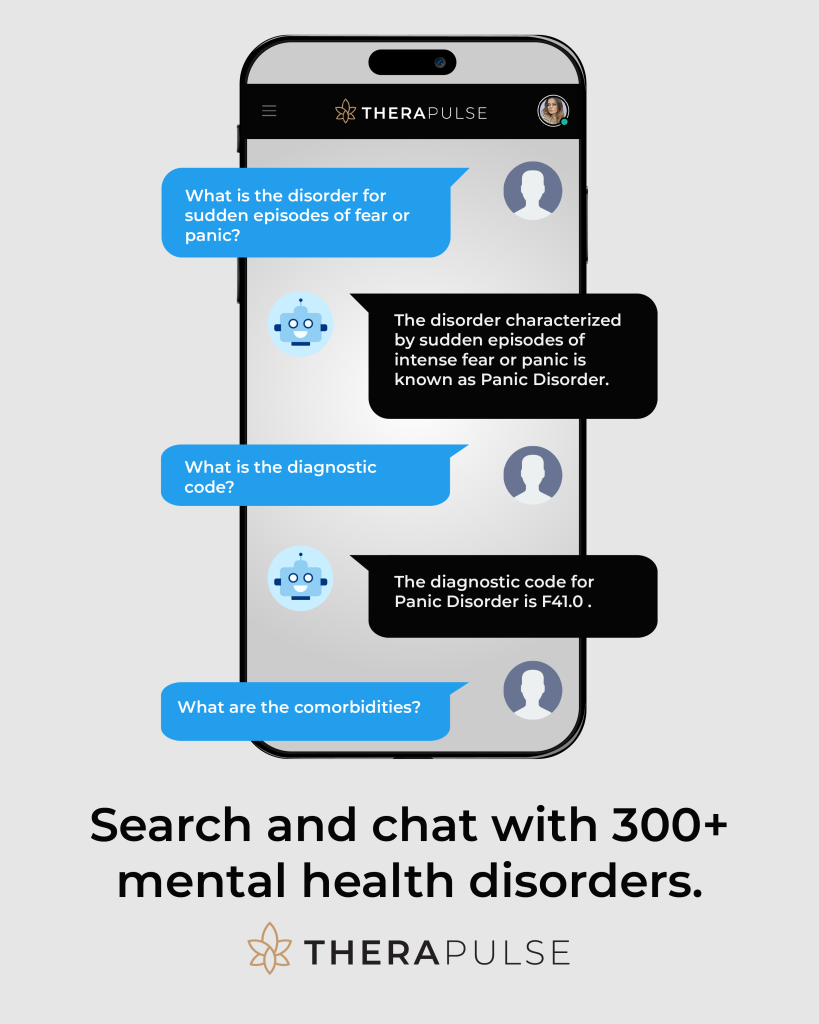The Mental Status Exam (MSE) is a structured tool used by mental health professionals to assess a person’s psychological state at a given time. It helps with diagnosis, treatment planning, and tracking progress. Using an MSE checklist ensures thorough, consistent, and efficient evaluations.
Key Components of the MSE:
- Appearance & Behavior: Grooming, posture, motor activity, and attitude.
- Speech & Language: Rate, volume, clarity, and relevance of speech.
- Mood & Emotions: Emotional state, stability, and congruence.
- Thoughts & Perceptions: Logical flow, delusions, hallucinations, and insight.
- Cognitive Abilities: Memory, orientation, focus, and abstract thinking.
Benefits of a Checklist:
- Covers all key areas, reduces omissions.
- Saves time and ensures clear documentation.
- Facilitates better communication between providers.
AI tools like Therapulse can further streamline MSE documentation by automating note-taking, tracking trends, and integrating with EHR systems. This combination of structured checklists and AI improves the accuracy and efficiency of mental health assessments.
Main Parts of the Mental Status Exam
The Mental Status Exam includes five key components that help clinicians understand a client’s psychological state.
Appearance and Behavior
This involves observing grooming, hygiene, motor activity (like restlessness or tremors), attitude (such as being cooperative or hostile), and non-verbal cues like eye contact and posture. These observations can highlight symptoms and their intensity [1].
Speech and Language
Speech characteristics – such as rate, volume, clarity, and content – can reveal mood, cognitive function, and thought processes. For example, fast speech might suggest anxiety, while disorganized speech could point to cognitive impairment.
Mood and Emotional State
Clinicians assess a client’s reported mood, observed emotional expression (affect), emotional range, and stability. Signs like limited emotional expression or unstable moods may indicate deeper issues.
Thought Patterns and Perceptions
This component involves evaluating how thoughts progress, identifying delusions or hallucinations, and assessing reality testing and insight. These insights help detect thought or perceptual disorders [1][3].
Cognitive Abilities
Orientation, memory, attention span, and abstract thinking are examined to gauge cognitive skills. This might include testing recall or the ability to focus [2][4].
These elements together create a thorough mental health profile. By using structured checklists based on these components, clinicians can ensure accurate and consistent evaluations.
MSE Checklist for Quick Documentation
This checklist builds on the main components of the Mental Status Examination (MSE) to help clinicians document assessments quickly and accurately. It serves as a practical tool to ensure no key observations are missed.
Checklist for Appearance and Behavior
- Grooming: Hygiene, hair care, and clothing condition
- Physical demeanor: Posture, gait, and eye contact
- Motor activity: Signs like tremors, restlessness, or unusual movements
- General behavior: Levels of cooperation and engagement
- Self-care: Signs of neglect or excessive attention to detail
Checklist for Speech and Language
- Speech characteristics: Rate (e.g., normal, pressured, slowed) and volume (e.g., appropriate, loud, soft)
- Clarity: Clear articulation or slurring
- Flow: Smooth or disrupted speech patterns
- Content relevance: Staying on topic or tangential responses
Checklist for Mood and Emotions
- Mood and affect: Reported emotional state vs. observed expressions
- Mood stability: Consistent or fluctuating emotions
- Congruence: Alignment between verbal reports and visible emotions
- Intensity: Level of emotional expression
Checklist for Thoughts and Perceptions
- Thought processes and content: Logical flow, delusions, or unusual beliefs
- Reality testing: Awareness of surroundings and circumstances
- Perceptual disturbances: Presence of hallucinations
- Insight: Understanding of their current situation
Checklist for Cognitive Abilities
- Orientation and memory: Awareness of time, place, person, and recall ability
- Attention: Ability to focus and concentrate
- Abstract thinking: Interpreting concepts or analogies
- Calculation skills: Basic arithmetic capability
This checklist supports thorough documentation while saving time in clinical practice [2][4]. It helps clinicians conduct detailed evaluations efficiently, creating a strong foundation for effective MSE documentation.
Steps for Conducting an Accurate MSE
With your MSE checklist ready, the focus now shifts to conducting the exam effectively.
Preparing for the Session
Before starting, review the client’s records and any prior MSE findings. Create a quiet, comfortable space for the session to allow for focused observation.
Key steps to prepare:
- Review client history: Go through previous assessments and current concerns.
- Gather materials: Ensure your MSE checklist and documentation tools are at hand.
- Set up the environment: Arrange proper lighting and seating to facilitate observation.
Once everything is set, you’re ready to engage with the client and begin your observations.
Observing and Engaging the Client
The goal is to blend clinical observation with building a therapeutic connection. Pay attention to both verbal and non-verbal cues during the conversation.
Observation tips:
- Watch body language without being intrusive.
- Note how the client presents initially and any changes throughout the session.
- Look for mismatches between what the client says and how they behave.
- Observe how they interact with their surroundings and others.
Engagement strategies:
- Ask open-ended questions to encourage detailed responses.
- Show empathy and allow pauses for the client to reflect.
- Be alert to subtle changes in speech patterns or emotional tone.
These observations are key to creating thorough and structured documentation.
Organized Documentation
Good documentation ties your observations together and ensures continuity of care.
| Documentation Component | Best Practice |
|---|---|
| Timing | Write down observations right after the session. |
| Detail Level | Use checklist categories, include specifics and direct quotes. |
| Objectivity | Stick to what you observe and avoid assumptions. |
Keep cultural factors in mind to avoid misinterpreting behaviors or responses that may be normal within the client’s cultural context [1][5].
To streamline your notes, organize them based on the main MSE components outlined in your checklist [1][5].
sbb-itb-8e8938b
Using AI Tools for MSE Documentation
AI technology is changing the way mental health professionals handle Mental Status Exam (MSE) documentation. These tools help streamline repetitive tasks, ensure accuracy, and track behavioral trends over time – all while staying compliant with HIPAA regulations.
How AI Enhances Documentation
AI tools bring several benefits to MSE documentation, including:
- Spotting patterns in mental state changes over time
- Monitoring subtle shifts in mood, cognition, and behavior
- Helping with early intervention through trend tracking
- Ensuring consistent and thorough documentation
Therapulse Features for MSE Notes

Therapulse simplifies MSE documentation with features like:
- Automated note-taking with customizable templates
- HIPAA-compliant, secure data storage
- Session transcription for detailed client observations
- EHR integration for seamless record management
These tools also provide session summaries that highlight important details, such as mood or cognitive changes, aiding in treatment planning [1][3].
Adding AI Tools to Your Workflow
To successfully integrate AI tools into your workflow, consider these steps:
- Getting Started
- Start with basic features, like automated notes
- Set clear protocols for AI usage
- Train your team on documentation standards
- Ongoing Optimization
- Assess how much time the tools save
- Check the accuracy and completeness of AI-generated notes
- Refine workflows based on team feedback
Key Tips for Implementation:
- Inform clients about the use of AI in documentation
- Schedule regular team training sessions
- Always review AI-generated notes to ensure accuracy
AI tools allow clinicians to save time on documentation without losing control over their professional judgment. By integrating these tools, you can dedicate more energy to client care while keeping records thorough and precise [2][4].
Summary
The Mental Status Examination (MSE) plays a key role in mental health assessment, providing a structured framework to evaluate patients and support diagnosis and treatment planning.
Final Thoughts
As the MSE remains central to mental health care, advancements in AI are reshaping how assessments are conducted. Combining the structured MSE approach with AI tools has introduced new possibilities for improving evaluations. This integration helps clinicians perform thorough and consistent assessments while reducing administrative tasks [2][4].
AI platforms have streamlined documentation, working alongside clinical expertise while preserving the personal connection with patients. Here’s how AI enhances traditional MSE methods:
| Aspect | Traditional MSE | With AI Integration |
|---|---|---|
| Documentation Time | Requires manual notes | Uses automated transcription and templates |
| Consistency | Dependent on clinician | Provides a standardized format |
| Progress Tracking | Relies on manual review | Offers automated trend analysis |
| Data Security | Paper files or basic EHR | Secure, HIPAA-compliant storage |
The future of mental health assessment lies in blending clinical expertise with technology. The MSE checklist continues to evolve, adapting to various patient needs and clinical environments [1][3].
FAQs
What are the 10 components of the MSE?
The Mental Status Examination (MSE) includes 10 main components that help clinicians assess a patient’s mental state in a structured way:
| Component | Key Observations |
|---|---|
| Appearance | Grooming, clothing suitability, and signs of self-care |
| Behavior | Motor activity, attitude, and eye contact |
| Speech | Coherence, speed, volume, and tone |
| Mood | Emotional state (e.g., calm, irritable, anxious) |
| Affect | Range and appropriateness of emotional expression |
| Thoughts | Organization, content, and logical flow |
| Perception | Hallucinations or sensory distortions |
| Cognition | Memory, orientation, and focus |
| Insight/Judgment | Awareness of condition and decision-making ability |
Cognitive abilities are evaluated through tasks such as:
- Determining orientation to time and place
- Testing memory recall (immediate, recent, and remote)
- Assessing focus (e.g., performing serial 7’s)
- Interpreting abstract concepts (e.g., explaining proverbs)
- Gauging general knowledge and awareness of current events [3][6]
Tools like MSE checklists or AI-assisted documentation can make this process more efficient while ensuring precision [1][5]. Addressing each component thoroughly allows for a comprehensive mental health assessment.




